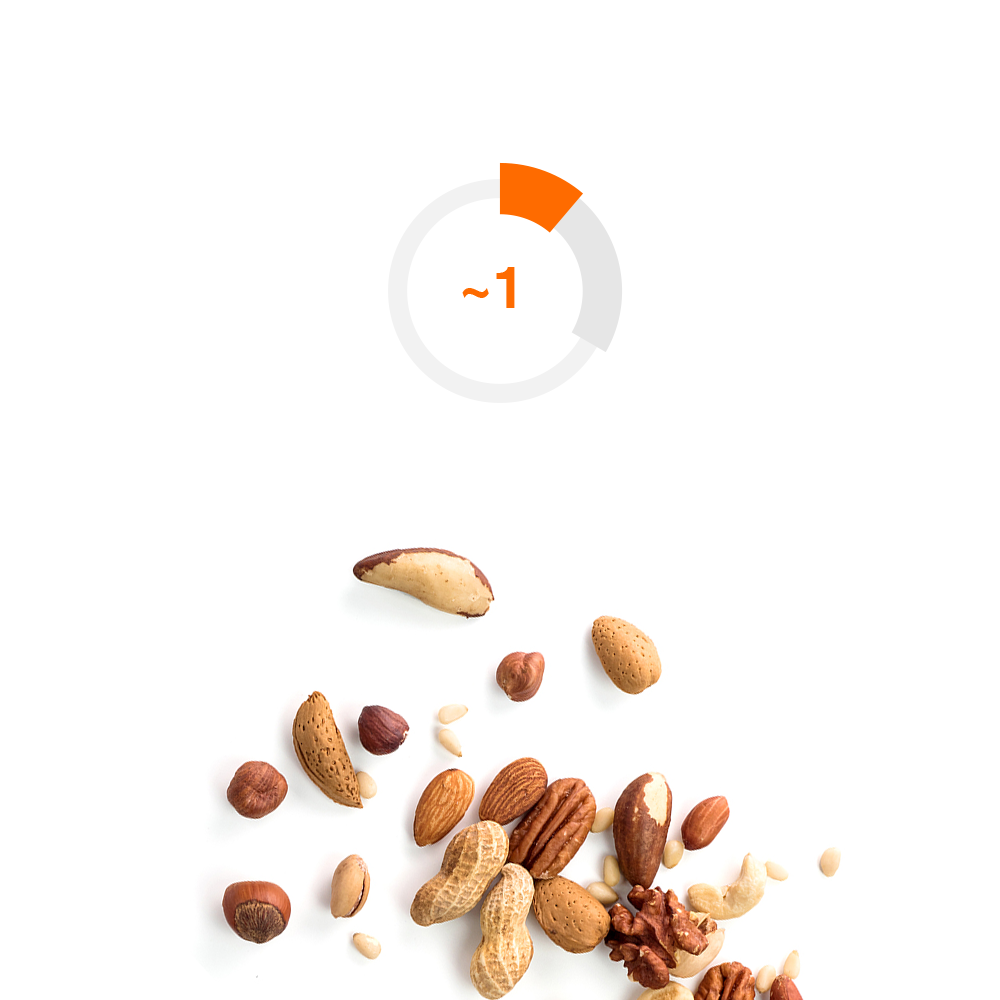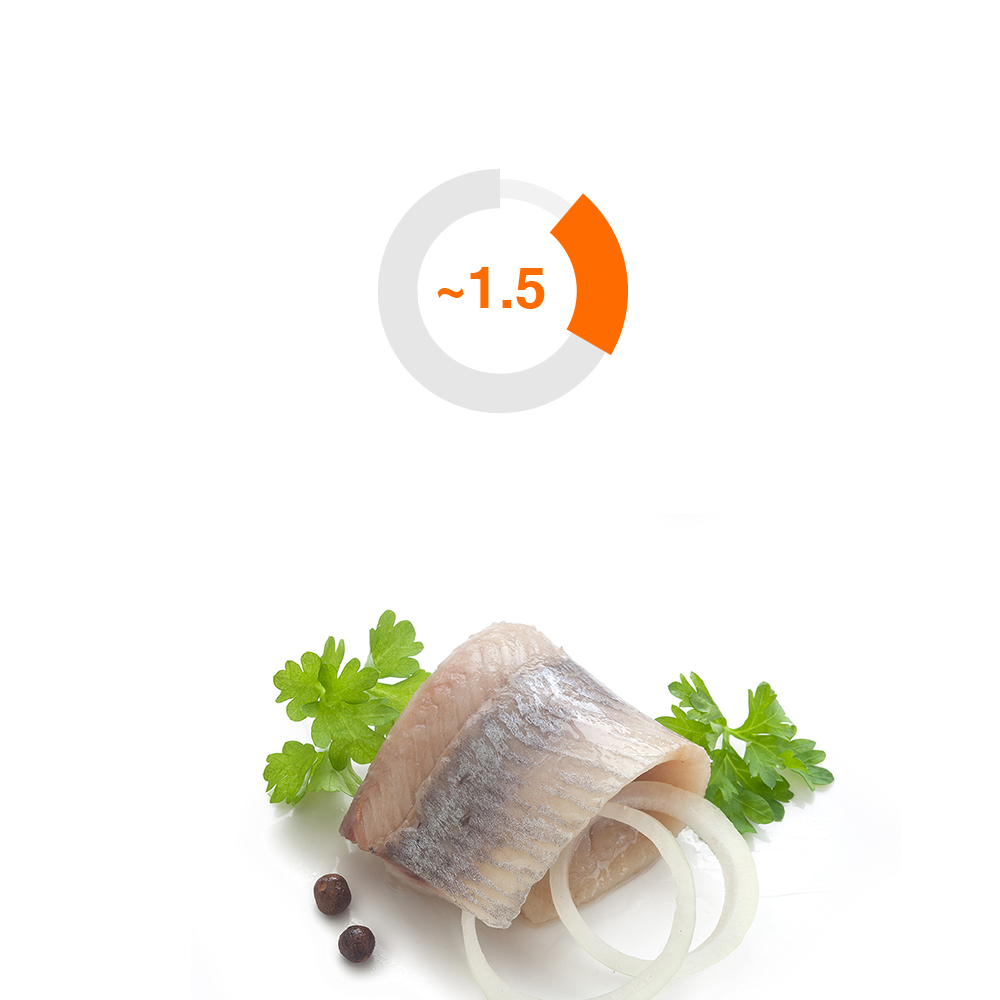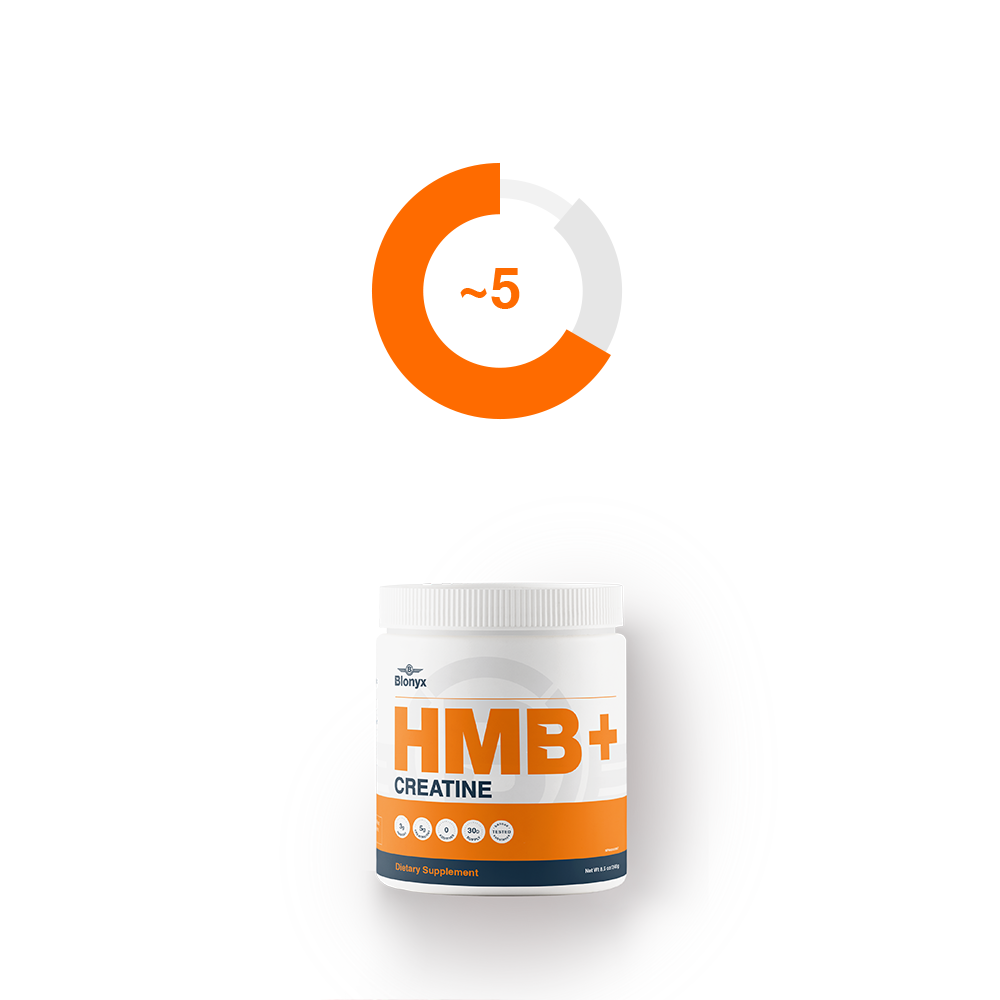
The Basics
So, what is creatine?
Creatine is a substance that is naturally produced by your body in the liver, kidneys and pancreas. It can also be obtained directly from food and supplementation. In the body, 95% of creatine is stored in the muscle and the remaining 5% is distributed in the brain, liver, kidney, and testes.
On average, people store approximately 120 g of creatine per 70 kg of bodyweight, but are able to store up to 160 g in their bodies.
Creatine acts as a very rapid, but limited source of energy for very high intensity muscle contractions and it is thought to work by increasing the body's store of Creatine-Phosphate (CR-P). CR-P provides energy rapidly when doing high intensity explosive movements such as a clean, a snatch or a sprint start.
There are many different forms of creatine available, however creatine monohydrate is the most researched sports supplement, alongside HMB, having been tested in over 100 research labs.
This page is a full guide to how creatine, more specifically creatine monohydrate, works, the research backing it and who should be using it. If you want to purchase creatine, click here.
Where your body gets creatine from

The body naturally makes 1g/d of creatine from amino acids

We get about 1.5g/d creatine directly from fish and meat

Research shows that you need an additional 3-5g/d creatine to improve performance
What will taking Creatine do for you?
A 2007 article in the The Journal of International Society of Sports Nutrition stated this: "Creatine Monohydrate is the most effective ergogenic nutritional supplement currently available to athletes in terms of increasing high-intensity exercise capacity and lean body mass during training."
Is creatine safe and legal?
Creatine is produced naturally in the body and it is also found in fish and meat. It is legal for both amateur and professional athletes. It's not banned by the NCAA, nor is it banned by the International Olympic Committee (IOC). From NFL to the NBA to the CrossFit Games, professional athletes of all kinds supplement with creatine. Although there are many creatine side effect myths, science does show evidence of a couple common side effects (19).
WEIGHT GAIN
Many people gain 1 to 2 kg of muscle weight, especially those who decide to do a loading phase, often recommended on product labels, where they take up to 20 g of creatine a day for a week, before cutting back to a 5 g a day "maintenance" dose. In extreme cases, a person can gain up to 6 kg, but that is rare. Generally, though, weight gain usually only happens in the first week or two of beginning supplementation. It is thought to be a result of increased muscle creatine levels, which initially pull water into the muscle. The muscle weight gain is desirable for a bodybuilder, or an all out powerlifter, but for those also wanting to retain their endurance performance or gymnastics skills, it may not be ideal.
UPSET STOMACH
A common complaint from athletes taking creatine is mild nausea and even diarrhea. Where this is rarely reported in the research, a recent study looking at creatine use in 59 soccer players concluded that doses of above 10 g are much more likely to cause these issues. Rowan Minnion, Blonyx CEO and writer of multiple creatine supplementation papers, believes that simple dosage management is key to avoiding this.
"I have only really seen digestive issues with either high doses, or when creatine is taken on an empty stomach. Two strategies will help: Spreading your dosage throughout the day, say after breakfast and dinner, and sticking to 5 g per day from the start. Loading up with creatine just isn’t worth the risk," he said.
SAFETY RECORD
Creatine's safety record is well-documented. Earlier research thought it might cause kidney damage and cramping, however; evidence is limited and more recent studies have not confirmed these risks.
One of the reasons early research believed there might be a connection between creatine supplementation and kidney damage is because ingesting creatine means the body will excrete higher-than-normal levels of a substance called creatinine. Increased creatinine in the urine happens to be one marker for kidney failure. Because of these higher levels of creatinine, a doctor could easily be misled and diagnose his client with a "false positive" for kidney failure. The best way to avoid this is to tell a doctor that you are taking creatine.
Why add HMB to Creatine?

HMB (or β-Hydroxy β-Methylbutyrate)
HMB is needed by the body to protect and repair muscle tissue. It is thought to do this by slowing muscle protein breakdown and speeding protein synthesis, and also by preserving the structural integrity of your muscle cells.

In athletes where muscle tissue is damaged (causing soreness), repaired and built more frequently through training, it stands to reason that we need more HMB. Lots of research has shown that supplementing with HMB improves exercise performance by supporting muscle cell repair and adaptation. It has been shown to speed strength and muscle mass gains in strength athletes, and improve endurance performance in cyclists and runners.

HMB and creatine are two of the most researched sports supplements available on the market. Their ability to increase muscle mass and strength with weight training are similar, yet research has shown that they work differently, meaning that using them together combines their effects. Research into the combination found that they may even double the effects of training (6).

How does creatine work?
Your body needs energy to function. During high-intensity exercise your body turns adenosine triphosphate (ATP), your basic energy source in the muscle, to adenosine diphosphate (ADP), which releases energy for movement. There is a limited amount of ATP available however, so the body has to turn ADP back into ATP quickly in order to keep ATP stores up to maintain the intensity of movement. The quickest way to to convert ADP back into ATP is by breaking the high energy phosphate molecule off the PCr and using that.
In short, you need creatine to generate energy when you're working out at a high-intensity for short durations. When creatine stores become depleted, your ability to produce energy quickly, declines.
The theory behind creatine supplementation is that increasing the amount of creatine in the body means you have more PCr available to quickly regenerate ATP for high intensity training, making you stronger and quicker.
Even though the exact way creatine works has been tricky to pin down, there have been more than one hundred peer-reviewed articles about creatine’s effectiveness as a supplement. On top of this, many have reported improvements in human exercise capacity.
It is also believed that increasing PCr from creatine supplementation speeds up the physical adaptations you get from training because creatine allows you to train at a higher level when it comes to both intensity and volume.
Did you know?
Creatine is one of the most researched sport supplement ingredients proven to enhance strength and mass with training.
Creatine is one of the select few supplement ingredients to have been assessed by the International Society of Sports Nutrition (ISSN). As a result, the ISSN has issued a position statement attesting to its effectiveness.
It is one of a small handful of supplements that have warranted a position statement to date, simply because of adequate human-based research on other supplement ingredients is still lacking.


Creatine is one of the most widely researched natural supplements. Because it is so popular, the published research is varied in many ways: From the level and type of athlete used as subjects (novice to highly trained, weightlifter to distance runners and football players) to the duration of study (weeks to several months). The majority of studies focus on the effects of creatine monohydrate on performance and health. Regardless of the form, supplementation with creatine has regularly shown to increase strength, fat free mass, and muscle morphology with concurrent heavy resistance training more than resistance training alone.
More recent research has also looked at creatine’s positive impact on disease conditions, and even cognitive function. The International Society of Sports Nutrition now has some great reviews that cover and discuss the latest creatine research in great detail (19).
Finally, some of the most recent studies also suggest that creatine might be beneficial for endurance performance, specifically by increasing blood volume, glycogen storage (glycogen is a primary source of energy for endurance training), and also reducing the reliance on oxygen to produce energy, possibly delaying the ventilatory threshold (19 ).
Want to learn more about Creatine?
When it comes to supplements, it is always important to do some of your own research before it comes to embarking on a creatine journey. Check out our 5-part series entitled: Check out our 5-part series entitled: "Understanding Creatine for the Laymen" blog series
Learn why Blonyx HMB+ Creatine is better suited for those who are serious about performance

Research References
1. Thomson et al. (2009): Controlled 9 week study on trained men. HMB increased lean mass, decreased fat mass and resulted in a substantial increase in lower body strength. Read the research
2. Nissen & Sharp (2003): A meta-analysis of all research to date on supplementation for strength and mass. Found that HMB and creatine are the only two supplements that have been shown to enhance strength and mass with resistance training. Read the research
3. Rowlans & Thomson (2009): A meta-analysis of existing research. HMB supplementation resulted in clear overall increases in strength in men starting a resistance training program, but the benefit of HMB in trained athletes was smaller. Read the research
4. Vukovich et al. (2001): Controlled 8 week study in weight training elderly men. HMB increased muscle strength and lean mass while increasing fat loss. Read the research
5. Lamboley et al. (2007): Placebo controlled study in college students. HMB supplementation increased maximal oxygen consumption by 5%. Read the research
6. Jowko et al. (2001): Controlled study in weight training males using creatine and HMB in combination. HMB and creatine supplementation results in even greater strength and lean gains than either HMB or creatine supplementation alone. Read the research
7. Baier et al. (2009): 1 year long controlled study in the elderly. HMB with two amino acids increased lean mass and protein turnover in older adults. Read the research
8. Slater et al. (2001): Controlled study in trained males. HMB enhanced strength and mass but the increases were small over the research period. Read the research
9. Vukovich & Dreifort (2001): Controlled study in trained cyclists. HMB supplementation increased cyclist endurance as measured by VO2 peak and lactic acid build-up. Read the research
10. Panton et al. (2000): Controlled study using male and female trained and untrained subjects. The study showed that regardless of gender or prior training, HMB increases strength and minimizes muscle damage when combined with a four week resistance-training program. Read the research
11. Kraemer et al. (2009): 12 week study on resistance trained men. HMB combined with two amino acids doubled the effects of training on lean mass and increased fat loss. Read the research
12. Gallagher et al. (2000): Controlled study with male weight lifters. HMB increased lean mass and peak muscle torques. It also decreased blood markers of muscle damage. Read the research
13. Knitter et al. (2000): Controlled study in male and female runners. HMB reduced muscle damage after a prolonged run as well as the perception of muscle soreness. Read the research
14. Kreider et al. (1999): Controlled study of 40 experienced, resistance trained men over just 4 weeks. HMB numerically increased lean mass and strength over the period of the study. Read the research
15. Wilson et al. (2008): A review of research on HMB. Concluded that collectively there is not only clinical data, but also mechanistic data supporting HMB's effect on increasing muscle mass and strength. Read the research
16. Nissen et al. (1996): Two controlled studies in weight training males for three and seven weeks. HMB increased strength and muscle mass while reducing muscle damage in all subjects. Read the research
17. Ransone et al. (2003): Controlled study in 35 trained collegiate football players. HMB increased muscle mass and reduced body fat however this was not statistically significant probably because the athletes only used HMB for 4 weeks so gains were small. Read the research
18. Wilson et al. (2013): The official position paper of the International Society of Sports Nutrition on HMB supplementation. HMB is one of the few supplements considered to be both safe and effective by the society. Read the research
19. Cooper et al. (2012): An updated review on creatine supplementation research by the International Society of Sports Nutrition. Read the research
20. Francaux & Poortmans (1999): A placebo controlled study that observed a 2kg average increase in body water content in athletes taking creatine monohydrate. Read the research
21. Hall & Trojian (2013): A recent review of the science behind creatine supplementation. Read the research
22. Durkalec-Michalski & Jeszca (2016): A placebo controlled crossover study in 58 highly trained male athletes showed an increase in lean mass, reduction in fat mass and improvements in aerobic training performance. Read the research













